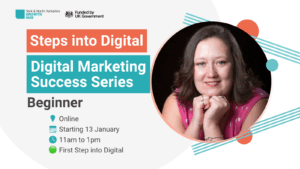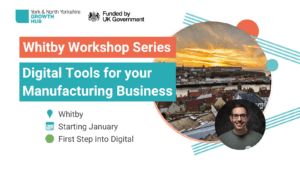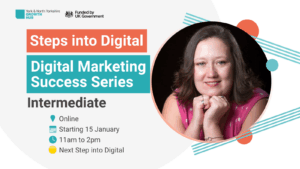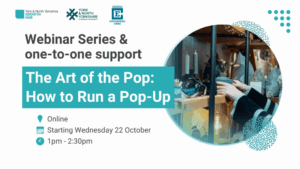
How to perform a sustainability audit
A sustainability audit assesses your business’s environmental and social impacts, ensuring compliance with relevant regulations, and identifying areas where you can make effective change to achieve your sustainability objectives. Here, we guide you through the main steps involved in performing a sustainability audit.

Establish your objectives and plan your approach.
The first step in conducting a sustainability audit is to define your objectives. What specific aspects of your business’s operations do you want to assess? Common areas to consider include energy consumption, waste management, supply chain ethics, staff engagement and training, and community engagement.
Forming an audit team will be helpful, so you have a variety of voices and experiences inputting to the work. Your team should include, where possible, individuals with some knowledge, or an interest in developing knowledge, of sustainability, compliance, and relevant regulations.
Make use of existing guidance and templates to help get you started. We have a Net Zero Toolkit for Businesses that can help you identify potential areas for change and action. Lloyds Bank have also produced a helpful guide, and The Carbon Trust have a guide specifically on performing a carbon audit.
Gather the data
Collect data on your business’ operations and practices related to your audit objectives. This may include energy bills, waste disposal records, supplier information, and voluntary or community activity. The Government provides guidelines on carbon reporting and reducing energy consumption, which can be invaluable during this stage.
Identify areas for improvement
Use the audit findings to identify areas where your business can improve its sustainability practices. This might involve setting specific targets for reducing carbon emissions, or adopting greener supply chain practices or a local-first procurement policy.
Develop an action plan
Create a detailed action plan to address the issues and gaps you’ve identified. Your plan should outline specific actions, responsible parties, timelines, and measurable targets. Align these actions with your own objectives, as well as any regulations and standards you need to meet. Then you can begin implementing your action plan and monitoring your progress. The British Business Bank has further guidance on creating an action plan.
Conducting a sustainability audit for your business is a proactive step in demonstrating your commitment to responsible business practices and aligning with relevant regulations. By adhering to sustainability regulations and consistently improving your practices, your business can contribute to a more sustainable and ethical future.

Learn more
Find out how to create a sustainability plan
Read our guide to the circular economy for tips on improving practice and processes
Articles
Set Up for Success with Google Business Tools: Lunch & Learn Webinar Series
This series will explore the free tools available from Google to help small businesses increase their online presence. Plus, you’ll learn how to leverage Google’s paid advertising platform for scalable growth without feeling like you are just wasting money. Participants will leave feeling confident to start using Google Tools to Improve their visibility, generate leads and make more sales online.
Fuel your business growth through great marketing, communications & branding
Every business needs a voice. Discover how powerful marketing, clear communications and a strong brand can transform your business. Join this webinar series to learn practical strategies that attract customers, build trust, and drive growth.
Smartphone Video Masterclass: One-day Workshops
The Smartphone Video Masterclass is back by popular demand, coming to Scarborough, Ingleton, Stokesley, Malton, York and Selby. Join our one-day hands-on video workshop designed to help businesses of all types and sizes take their first confident steps into video marketing.
Events
13th January 202610:00 am - 1:00 pmFREE
Online Workshops: Digital Marketing Success Series (Beginner)
Each workshop is packed with real-world examples, guided how-to sessions, and space to ask questions and get feedback so you can apply what you are learning to your own business and individual needs. All delivered online so you can attend without having to travel, perfect for rural and coastal businesses across North Yorkshire.
13th January 202610:00 am - 12:00 pmFREE
Whitby Workshop Series: Digital Tools for your Manufacturing Business
This engaging workshop series delivered by Hello Technology is designed to help manufacturing businesses harness the power of digital tools to improve their digital systems, record keeping, data management and marketing. Participants will be led through 5 focussed sessions, with each workshop blending expert-led guidance with practical exercises. Attendees will have the opportunity to apply new strategies and concepts directly to their business. With a mix of group learning and tailored support participants will leave with a clear digital roadmap, increased confidence and actionable insights to drive long-term success in their manufacturing business.
15th January 202611:00 am - 2:00 pmFREE
[FULL] 🟡 Online Workshops: Digital Marketing Success Series (Intermediate)
Join our Digital Marketing Success Series designed especially for small business owners who want to grow online, even if you don’t consider yourself “tech-savvy.” This weekly workshop series will guide you through the basics of digital marketing and on to more advanced strategies – all at your pace, with the same supportive group of peers by your side.
Resources
Webinar Recording: Autumn Budget 2025, how will it impact your business?
The Autumn Budget, announced on 26 November 2025, introduced a range of changes that business owners need to be aware of. From updates to taxation and compliance rules, to adjustments in incentives and support schemes. These measures could affect how you plan and operate in the year ahead. To help you understand what’s changing and what it means for your business, we’re hosting a webinar that breaks down the key points in a clear and practical way.
Webinar Recording: 🟡 Data Protection in practice
In this engaging and practical webinar series, Privacy Protect Group Ltd will guide you through everything you need to know to build a confident, compliant, and resilient approach to data protection in your business. Whether you're just starting out or looking to refine your practices, each session is designed to build your understanding step-by-step.
Webinar Series: How to Run a Pop-Up
From pop-up department stores to kitchen takeovers, cool things are popping up and popping off everywhere. In this exciting project, you’ll get to meet some of the teams behind these pop-ups and get their top tips for running a great pop-up.









